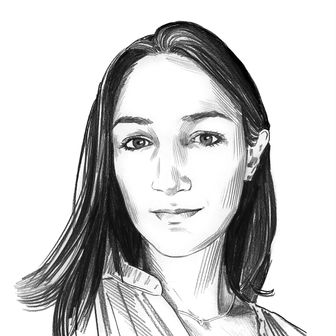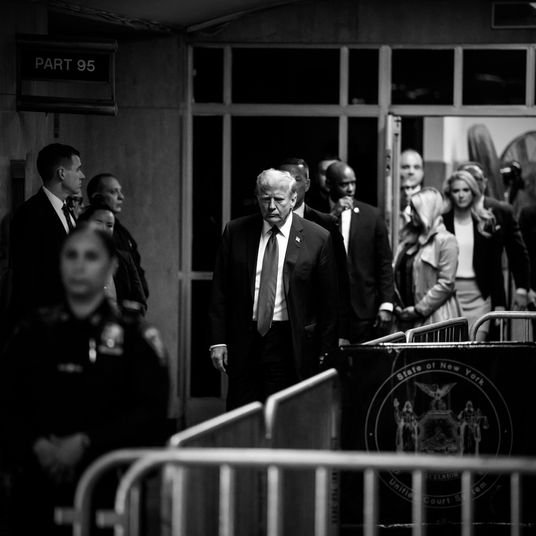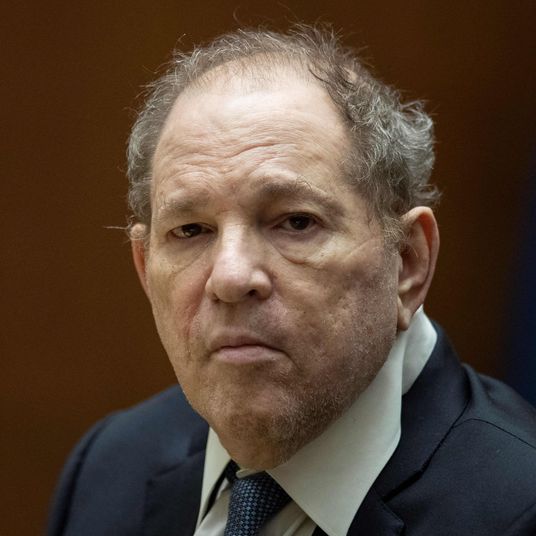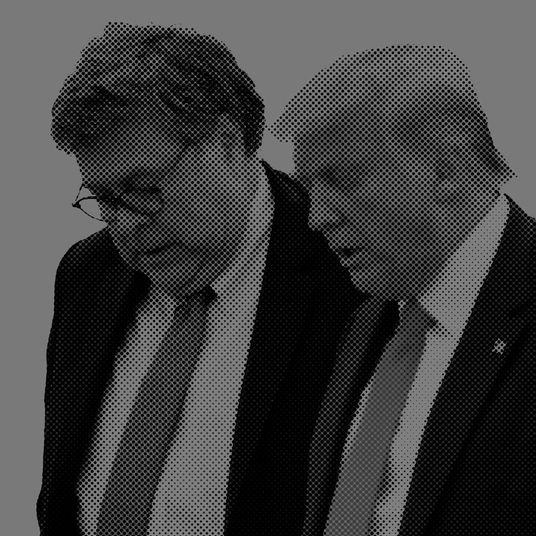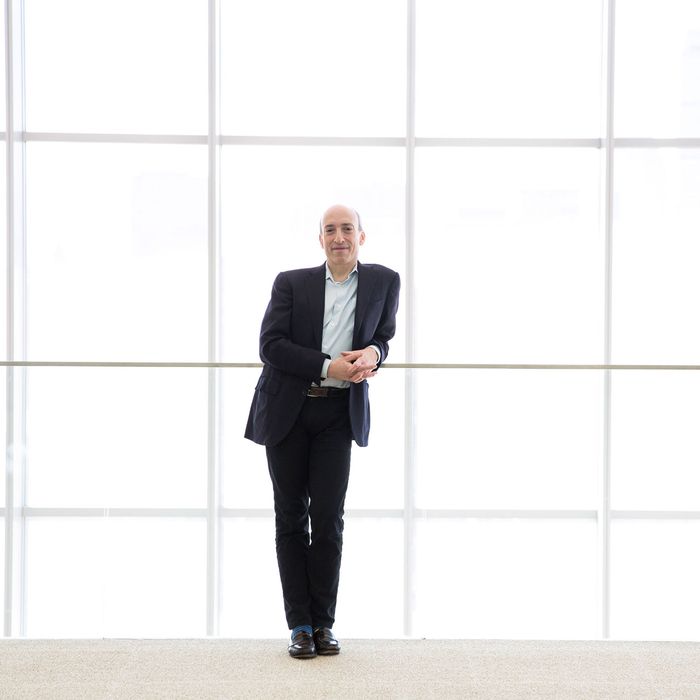
When financial regulators demonstrate that they hold generous views of bitcoin — that, contrary to the prevailing mood in Washington, they believe digital currencies could be more than a conduit for laundering money and buying fentanyl online — the crypto faithful honor them with affectionate nicknames. J. Christopher Giancarlo, who, as chairman of the Commodity Futures Trading Commission, green-lit bitcoin derivatives, became Crypto Dad. At the Securities and Exchange Commission, the libertarian-leaning Hester Peirce got tagged Crypto Mom, and her colleague Valerie Szczepanik is the Crypto Czar. In January, upon the news that the Biden administration wanted the SEC to be chaired by Gary Gensler, a Goldman Sachs alum turned regulator who had taught blockchain and crypto courses at MIT for years, a similar term of endearment seemed imminent. Professor Crypto, perhaps?
Before long, though, Gensler shattered any illusions that the crypto industry had one of its own as the top cop on Wall Street. “This asset class is rife with fraud, scams, and abuse,” he said in a scathing speech comparing the digital-coin realm to the “Wild West.” Five months into Gensler’s tenure, Wall Street veterans and bitcoin outsiders alike are still trying to figure out where he stands. (“Some really sketchy behavior coming out of the SEC recently,” Coinbase CEO Brian Armstrong carped on Twitter last week after a dispute over regulating a new product.) Recently, when I pointed out this dissonance to Gensler — that he had gone from finding crypto fascinating in the lecture hall to scary in the real world — I accidentally doubled his cowboy cliché. He quickly corrected me. “I used one ‘Wild!’ ” he said. “I used one!”
Gensler, 63, was sitting at a computer in front of a paned glass door and, beyond it, a verdant, tree-lined yard. For weeks, SEC staff have had the option of going into the office, but Gensler is content to work remotely. After losing his wife of two decades to cancer 15 years ago, he’s dating again; he was Zooming in from his girlfriend’s house, though he declined to say where it is. Following a stint in the Treasury Department during the Clinton era, and before serving as head of the CFTC under Obama, Gensler spent the last years of his wife’s life as a “stay-at-home dad” to their three daughters, and he still carries that vibe. “During ’01 to ’07,” he says, “I was pretty much off the grid.”
Gensler is a traditionalist in the sense that he believes the laws currently governing the market, which date back to the Great Depression, are sufficient to handle modern inventions like bitcoin. There’s no need to rewrite the rules: The crypto exchanges should register with the government, regulators can decide whether various digital coins are actually securities (like stocks) by applying the historic standard known as the Howey Test, and discourse on Reddit isn’t so different from the early days of radio. He enjoys making references to antiquity.
In other ways, Gensler fashions himself a progressive. He’s the first SEC chief to fully reject the “chairman” title in favor of the gender-neutral “chair.” (Mary Schapiro, the agency’s first female head, is still listed as chairman in her official bio.) He had his team contact The Wall Street Journal to ask for a correction when it used the old title, which the paper refused to make on grounds of editorial style. Gensler also resolutely refers to Satoshi Nakamoto, the unknown creator or creators of bitcoin, as “she” — as well as “Nakamoto-san,” out of reverence for the innovation. He has decidedly less fondness for some of the newer market trends being pushed to amateur investors, whether they be Robinhood’s so-called commission-free trading or special-purpose acquisition companies, better known as SPACs.
You were nominated at close to the height of meme-stock mania, when it looked as if the markets had gone totally nuts. What were you thinking as you waited to get confirmed?
I was thinking of it in terms of regular investors. Neither of my parents went to college, and I’m deeply a markets person; I don’t know what it is. My dad had a small business serving the bars of Baltimore — cigarettes, pinball tables, jukeboxes. He would toss us Value Line tear sheets when I was in middle school and say, “What do you think?” He never had much money, but he might buy 50 shares of something. So I thought of it in January as I think of it now — How is it playing out for retail investors?
The orders that we put in on a digital app by and large don’t go to stock ex-changes like NASDAQ and NYSE. They go to wholesalers; some people just call it the “dark pools.” And so a lot of our markets are not lit. We don’t have that order competition that can drive efficiency in a market. There’s somebody paying for the order flow. That’s not necessarily the best flow for us.
One defense of payment for order flow is that it lets brokerages offer free trading that in turn democratizes investing.
Can I just say something? It’s not “free.” It’s a misnomer. It is not free, and it costs everybody who goes on those platforms. Because the platform is doing multiple things: One, they’re selling your order flow. Two, they’re collecting data, and the person paying for the order flow is getting that data. There’s an inherent conflict because your order — your buy or sell order — is not necessarily competing in the market. So it is anything but free.
Is there anything that bothers you about the way that Reddit, social media, and trading apps are shaping how people buy and sell stocks?
I think of a few things. Are people able to buy and sell at the lowest cost and get fast execution when they send an order to the market? With nearly half of it in the dark market or dark pools and the like, I do question that. Second, there was a moment in January when a lot of brokerage applications shut off retail investors. Now they say they did it based on their user agreement and that they were getting inundated with trading and needed to post margin at the clearinghouses. It’s a little bit in the plumbing, but what we’re looking at is shortening the settlement cycles from two days to one day. That can lower some of those risks. A third thing I think about is the potential conflict in digital engagement. The apps are trying to maximize their business model — trying to maximize payment for order flow and trading. And yet economic studies show that the more you trade, generally, the lower your returns.
We’ve seen leagues of purported retail investors band together to trade stocks. Do you consider this market manipulation? It seemed as if they were investing irrationally — particularly when company valuations were way out of whack with their actual business.
In the markets, since antiquity, investors have taken risks, and there’s a bit of the “mood of the crowd” that occurs and some people say it’s about fear and greed and so forth. But our basic bargain from the 1930s on has been that investors get to decide. You mentioned social media. We have had, for decades, new forms of communication. Roosevelt and the radio; by the 1960s, it’s television; by the 1990s, it’s the internet. The forums may change, but the basic bargain is still the same. Investors get to talk and debate, whether it’s on Reddit or elsewhere. The policies are the same: not to defraud the public, whether that’s a large institution, a hedge fund, or an individual. And the individual can be a billionaire or somebody just scraping together a few hundred bucks to trade, whether they’re long a market or short a market.
I’ve noticed that in your lectures, you have a habit of asking people who they think Satoshi Nakamoto is, and I was wondering: Who do you think it is?
Right, Jen. So who’s Satoshi Nakamoto? Who is she?
Let me ask you first.
No, I’m asking you!
I’ve seen a good argument that Nakamoto is no longer alive and that they may have been Hal Finney, the software engineer. Do you have a theory?
No, I don’t. I do think that whoever she was, or they, Nakamoto-san solved a couple of riddles — like double spending and how to ensure you can move value on the internet and not do it multiple times.
The challenge we’re at now, years later, is that thousands of projects have started that haven’t really lived within an investor-protection regime. There are not brokers that stand between us and those markets where we open an account. And the other thing that most people wouldn’t know is this: If you open an account on a crypto exchange or you go to a lending platform, you actually do not own bitcoin or another cryptocurrency. You do not own it. You just have a relationship with that exchange, where you’re a counterparty. It’s a little bit like if you have a Starbucks wallet on your phone. You don’t actually have the dollars underlying that, or the cup of coffee underlying it — you have a creditor relationship with Starbucks. And here you’re just a creditor of that crypto exchange. They may or may not even have the crypto. There are hundreds of exchanges; many have gone out of business because they were either hacked or were outright frauds or scams. The big ones now have trading on 50 or 200 tokens, and probabilities are such that many of those tokens are securities or investment contracts under our laws. It would be far better if some of these platforms came in and actually registered as to what they are.
You’d like to see more of that.
Those trading and lending platforms, whether they’re called centralized or decentralized, there’s still an operator and something central. The “decentralized” ones — they’re not that decentralized, actually. It’s not just software. There is somebody there who has designed an incentive system, a business model, earning fees, has a governance token, and is setting up the protocol in the middle.
I’m sorry to remind people: We had peer-to-peer lending, and the companies that did it said, “Well, it’s just Aisha lending to Scott.” No. There was a company in the middle. They also started to say, “We’ll take your pool of money and we’ll lend it to people.” And then we brought that activity into the securities laws.
I think that registration is a way to bring a lot of the market into the public-policy framework, into the investor-protection framework, the anti-money-laundering and tax-compliance framework.
Is the decentralization of crypto — or the decentralization that crypto aspires to — inherently in conflict with the SEC’s mission to regulate?
There’s a range of market structures that can work, but they work best when they’re in some regulatory perimeter. I happen to think a lot of economics shows that transparency works better for investors and issuers than darkness. Central clearing can lower the risks of the market and enhance competition in many cases. When you say “decentralization” — markets over centuries tend toward some centralization. In antiquity, you’d bring the apples or rice or grains into the central market square. It’s where the wholesalers meet and haggle. I don’t think it’s a surprise that that’s where you get the most transparency.
Under your predecessor, Jay Clayton, the SEC charged the blockchain payments company Ripple with engaging in an illegal securities offering. How will your SEC decide which cryptocurrencies ought to be subject to greater scrutiny?
Jay Clayton said it pretty well in February 2018 in congressional testimony — that he hadn’t seen a token yet that didn’t pass the Howey Test. In 1933, Congress included a definition of security that was pretty inclusive, and the Supreme Court has reaffirmed it multiple times. You exchange money with some common enterprise, and you’re anticipating profit based upon the efforts of that common enterprise.
There’s been about 5,000 initial coin offerings or projects. Some of them failed; some of them were frauds and fake. About 75 or 80 purportedly have market caps over $1 billion. And this is a $2.1 trillion global asset class. I think it’s of a size that we need to address, and seriously address. Anything that we do to bring more investor protection to this Wild West of the crypto market, I think, has benefits.
I shared this analogy once in the Oval Office with President Obama. I said to him, “Think about a football field if there was no ref. At first, it would be fun to throw the elbows and everything, but after a while, do the fans even come to watch the game? Because it could get pretty brutal.” He smiled and laughed a little bit and had some funny retort. And then he went out to the Rose Garden and went off the teleprompter to do the football story.
Many people thought that, because you taught crypto at MIT, you would be friendly toward bitcoin. You’ve come off as a lot more skeptical.
I’ve said the same thing to students I say now. I’m the same. I think that technologies don’t long exist outside of public-policy frameworks. People get hurt — investors, in this case. Some people aren’t paying their taxes and others are, and that’s not fair. It’s not fair. I think Nakamoto, whoever she is, changed the conversation. Years later, there is still a bitcoin network, but I will say this: It’s lived in kind of an adversarial swamp and withstood a lot of attacks. Somehow that network has survived 12 years. That doesn’t mean it will survive another 12. It’s uncertain. It’s a digital, scarce, speculative store of value. For 10,000 years, we’ve been able to invest in gold or silver — a scarce, physical store of value. But gold has various limited commercial uses. It’s beautiful as jewelry; I used to wear it as a wedding ring. Bitcoin is a digital ledger, okay — but it might not exist tomorrow. It’s a highly speculative asset class. And so I’m just interested in the investor-protection side.
If you were to rank the risks in the broader markets that you want to reduce, are cryptocurrencies at the top?
I couldn’t rank. I mean, I have three daughters; I wouldn’t want to rank them, either. I do want to answer, though, an implicit question about risk. Risk is inherent in finance. It’s actually inherent in physics: entropy. So we don’t repeal risk. There’s risk, but with transparency and competition, we can make markets more efficient and lower what are called economic rents. I think the public can get a better deal. Crypto, if it was within the regulatory perimeter clearly — these platforms should come in and register with the appropriate authorities. It’s still a highly speculative asset. It still could fluctuate quite a bit, but you’d lower the risk of fraud, lower the risk of manipulation, lower some of the tax compliance and anti-money-laundering risk.
What about SPACs? Do those investment schemes need more oversight?
SPACs are rather costly exercises in financial engineering. Some sponsor raises $200 million or $2 billion or whatever and takes 20 percent — I repeat, 20 percent. For what? For a blank-check company that gets about two years to go find a company to take public. And then many of the early shareholders — from the institutional and larger shareholders to hedge funds — redeem out. The retail public is left bearing that early 20 percent loss and all the other bankers’ costs and lawyers’ costs.
Then another group of investors comes in called “private investors in the public equity.” And they come in, often, with a little bit more information [than retail investors have] for a handful of days. That whole system, even if fully disclosed, has a lot of cost — and I’m not sure it’s fully disclosed yet. We’re working on enhancements to the disclosure and also on a lot of the inherent conflicts. We’ll see what my fellow commissioners think. We’ll put it out to public comment.
Umm, yeah. I think there’s a need for some reform there.


